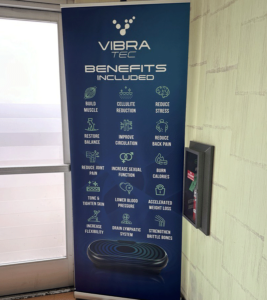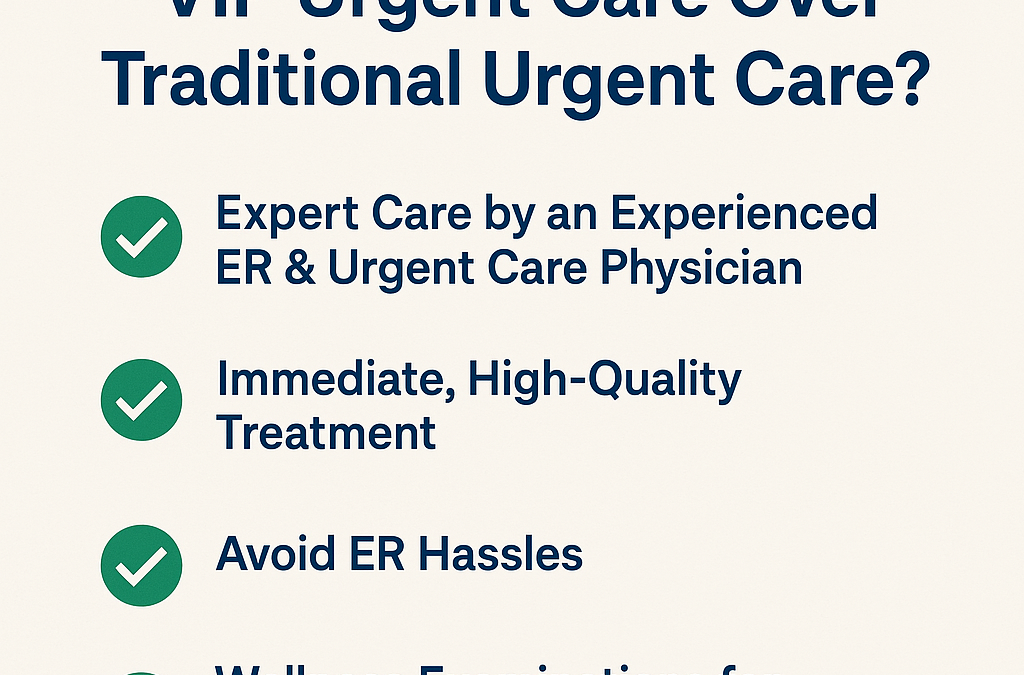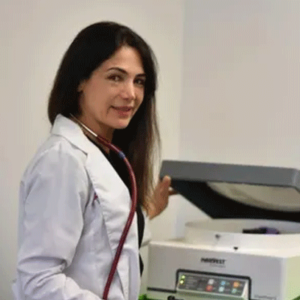Understanding the Role of Urgent Care in Treating Common Injuries
What Exactly is Urgent Care and When Should You Choose It?
Urgent care centers serve as a vital link in the healthcare system, providing medical attention for conditions that necessitate prompt intervention but are not severe enough to warrant a visit to a hospital emergency room. These facilities effectively bridge the gap between primary care physicians and emergency departments, offering a solution for illnesses and injuries that cannot wait for a scheduled doctor’s appointment yet do not pose an immediate threat to life. Often operating on a walk-in basis with extended hours, including evenings and weekends, urgent care centers offer a convenient and accessible option for addressing immediate health concerns outside the typical Monday-to-Friday, 9-to-5 doctor’s office schedule. Dr. Farah’s urgent care, for example, specializes in delivering acute care services for a broad spectrum of medical issues, ranging from minor injuries to more serious illnesses. The focus at such facilities is on making quick yet informed decisions and conducting thorough evaluations to ensure patients receive effective care in a timely manner. The fundamental value of urgent care lies in its ability to provide timely solutions for non-life-threatening health problems efficiently, catering to individuals who seek immediate medical attention without the often prolonged wait times and higher costs associated with emergency room visits for less critical conditions.
The Benefits of Opting for Urgent Care Over the Emergency Room for Non-Severe Injuries
Choosing the appropriate healthcare setting for an injury is crucial for receiving timely and cost-effective care. For non-severe injuries, urgent care centers offer several advantages over hospital emergency rooms. One of the most significant benefits is the considerably shorter wait times typically experienced at urgent care facilities. Emergency rooms prioritize patients with life-threatening conditions, which can result in long waits for individuals with less critical injuries. In contrast, urgent care centers are designed to address immediate needs that are not emergencies, allowing patients to be seen and treated more quickly. Furthermore, the cost of treatment at an urgent care center is generally much lower than that of a similar visit to the emergency room. This affordability makes urgent care a more accessible option for many individuals, particularly those with high insurance deductibles or limited financial resources. Despite the lower cost, urgent care centers are well-equipped to handle a wide array of common injuries, including sprains, strains, minor fractures, and cuts that may require stitches. The combination of reduced wait times and lower costs makes urgent care an appealing and practical alternative to the emergency room for individuals with injuries that are not life-threatening. This reflects a growing awareness among patients about the importance of selecting the most appropriate healthcare setting based on the urgency and severity of their medical needs.
Sprains and Strains: Why Urgent Care is Your Go-To for Prompt Relief
Identifying the Symptoms and Severity of Sprains and Strains
Sprains and strains are common musculoskeletal injuries that can occur during sports, exercise, or everyday activities. A sprain involves damage to ligaments, the strong bands of tissue that connect bones at a joint, typically resulting from a sudden twist or force that overstretches or tears these ligaments. Conversely, a strain affects muscles or tendons, the fibrous cords that attach muscles to bones, and often occurs due to overexertion, stretching, or twisting. The symptoms of both sprains and strains can include pain in the affected area, swelling, bruising, and a limited range of motion. The severity of these injuries can vary significantly. Mild sprains or strains may only cause minor discomfort and slight swelling, allowing for continued use of the affected limb with some pain. Moderate injuries involve more pronounced pain, noticeable swelling, and difficulty bearing weight or using the injured area. Severe sprains or strains can result in intense pain, significant swelling, an inability to bear weight, and potential instability of the joint. Recognizing these symptoms and understanding the potential range of severity is essential for individuals to determine the appropriate course of action, including whether a visit to an urgent care facility is warranted.
How Urgent Care Professionals Diagnose and Assess These Injuries
When an individual seeks medical attention at an urgent care center for a suspected sprain or strain, healthcare professionals will employ a systematic approach to diagnosis and assessment. The process typically begins with a thorough physical examination of the injured area. The urgent care provider will assess the patient’s level of pain, the extent of swelling, the presence of any bruising, and the range of motion in the affected joint or muscle. Palpation, or gentle touching of the injured area, will help identify specific points of tenderness, which can provide clues about the location and severity of the injury. To rule out the possibility of a bone fracture, especially in cases of significant pain or an inability to bear weight, X-rays are often taken. The medical history provided by the patient, including details about how the injury occurred and any pre-existing conditions, will also be carefully considered as part of the diagnostic process. The ability to conduct on-site X-rays in many urgent care centers is a crucial advantage in diagnosing sprains and strains, as it allows for the rapid exclusion of fractures and facilitates the development of an appropriate and timely treatment plan.
Comprehensive Treatment Options for Sprains and Strains Available at Urgent Care Centers
Urgent care centers offer a variety of treatment options for sprains and strains, aimed at reducing pain and swelling, promoting healing, and restoring function to the injured area. Initial treatment often involves the implementation of the R.I.C.E. method, an acronym that stands for Rest, Ice, Compression, and Elevation. Resting the injured limb by avoiding activities that cause pain is crucial for preventing further damage and allowing the healing process to begin. Applying ice packs to the affected area for 15-20 minutes at a time, several times a day, helps to reduce swelling and pain. Compression, typically achieved by wrapping the injured limb with an elastic bandage, can help minimize swelling and provide support. Elevating the injured limb above the level of the heart, whenever possible, also aids in reducing swelling by promoting fluid drainage. In addition to the R.I.C.E. protocol, urgent care providers may recommend over-the-counter pain relievers such as ibuprofen or acetaminophen to help manage pain and inflammation. For more severe sprains or strains, a splint, brace, or elastic bandage may be applied to immobilize and provide support to the injured joint or muscle, further promoting healing and reducing pain. Crutches may be provided to help patients avoid putting weight on an injured leg or ankle, facilitating rest and preventing further injury. In some instances, particularly for more significant injuries, the urgent care provider may recommend a referral to a physical therapist for a tailored rehabilitation program designed to restore strength, flexibility, and full function to the injured area.
When Should You Seek Urgent Care for a Suspected Sprain or Strain?
Knowing when to seek professional medical attention for a suspected sprain or strain is important to ensure proper healing and avoid potential long-term complications. It is generally advisable to seek urgent care if you experience significant pain, swelling, or bruising that makes it difficult to use the affected limb. If you are unable to bear weight on the injured leg or ankle, this could indicate a more severe injury that requires professional evaluation. Hearing a popping sound at the time of the injury can also be a sign of a more serious ligament or tendon tear, warranting a visit to urgent care. If you have attempted home treatments such as rest, ice, and elevation for a day or two and your symptoms do not improve or worsen, seeking medical attention is recommended. Additionally, any visible deformity of the injured joint should prompt a visit to urgent care to rule out a fracture or severe sprain. These guidelines can help individuals make informed decisions about when professional medical help is necessary for a suspected sprain or strain.
Cuts and Lacerations: Getting Expert Care and Stitches at Your Convenience
Determining When a Cut or Laceration Requires Stitches
Not all cuts require medical attention, but knowing when a cut or laceration may need stitches is crucial for preventing infection and ensuring proper healing. Generally, cuts that are deeper than ¼ inch or longer than ½ inch are often recommended to be closed with stitches. If a cut is bleeding profusely and does not stop bleeding after applying direct pressure for 10 to 15 minutes, it should be evaluated by a medical professional, as stitches may be necessary to control the bleeding. Cuts with jagged or uneven edges may also require stitches to ensure proper alignment of the skin for optimal healing and to minimize scarring. Deep cuts that expose underlying tissues such as muscle, tendon, fat, or bone typically need stitches to facilitate healing and reduce the risk of complications. Lacerations located on the face, scalp, or near joints may require stitches for cosmetic reasons or to prevent restricted movement and ensure proper healing in these sensitive areas. Furthermore, cuts that result from animal bites or contact with rusty or dirty objects may need stitches and a tetanus shot to prevent infection. Recognizing these indicators can help individuals determine when professional wound care, including possible stitches, is needed.
The Step-by-Step Process of Receiving Stitches at an Urgent Care Clinic
When you visit an urgent care clinic for a cut that may require stitches, the process typically involves several key steps. First, a healthcare professional will assess the wound to determine if stitches are indeed necessary and if the injury can be appropriately treated at the urgent care facility. Next, the area surrounding the cut will be thoroughly cleaned and disinfected using a sterile solution to minimize the risk of infection. To ensure your comfort during the procedure, a local anesthetic will likely be injected into the area around the wound to numb it. Once the area is numb, the healthcare provider will carefully stitch the edges of the wound together using sterile instruments and sutures. The type and number of stitches used will depend on the size, depth, and location of the cut. After the wound is closed with stitches, a bandage will be applied to protect the area and keep it clean. Finally, the healthcare provider will give you detailed instructions on how to care for your stitches at home, including how often to change the bandage, what to watch for in terms of infection, and when to return for stitch removal, if necessary. Depending on the nature of the cut and your vaccination history, a tetanus booster shot may also be administered.
Essential Aftercare Instructions for Proper Healing of Stitched Wounds
Proper aftercare is crucial for ensuring that a stitched wound heals correctly and without complications. It is important to keep the stitched area clean and dry, following the specific instructions provided by your healthcare provider. Bandages should be changed regularly as directed, typically once or twice a day, or if they become wet or dirty. To prevent infection and promote healing, avoid touching or picking at the stitches. It is also essential to monitor the wound for any signs of infection, such as increased redness, swelling, warmth around the wound, increased pain, or pus draining from the area. If you notice any of these signs, you should seek medical attention promptly. If the stitches you received are not the dissolvable type, you will need to return to the urgent care clinic or your primary care physician to have them removed. Your healthcare provider will give you specific instructions on when to schedule this follow-up appointment. Additionally, you should avoid activities that could put excessive tension on the stitches, as this could cause them to open prematurely. Following these aftercare instructions diligently will help ensure proper healing and minimize the risk of complications.
Recognizing When a Cut is Too Severe for Urgent Care and Requires an ER Visit
While urgent care centers are well-equipped to handle many cuts requiring stitches, there are certain situations where a cut is too severe and necessitates a visit to a hospital emergency room. If a cut is bleeding severely and the bleeding cannot be controlled with firm, direct pressure, it is important to seek emergency medical attention immediately. Very deep cuts that expose underlying tissues such as bone, muscle, or major blood vessels also require the specialized care available in an emergency room. Lacerations located on sensitive areas of the body, such as the chest, neck, abdomen, or genitals, should also be evaluated in an emergency setting. If a cut results in a loss of sensation or function in the affected area, this could indicate nerve or tendon damage that needs immediate attention in an emergency room. Cuts that are the result of a serious accident or trauma, such as a motor vehicle accident, may be associated with other injuries that require emergency care. Similarly, very large cuts or those that are gaping open widely may need more extensive treatment than can be provided in an urgent care setting. In these situations, the emergency room offers the necessary resources and specialists to address the severity of the injury.
Minor Fractures: Efficient and Effective Treatment at Urgent Care Facilities
Recognizing the Signs and Symptoms of a Minor Bone Fracture
A minor bone fracture, while not life-threatening, still requires prompt medical attention to ensure proper healing. Recognizing the signs and symptoms of a minor fracture is the first step in seeking appropriate care. Common indicators include localized pain at the site of the injury, which may be intense and worsen with movement. Swelling and bruising around the injured area are also typical signs, often developing shortly after the injury occurs. Tenderness to the touch is another common symptom, where even gentle pressure on the injured bone can cause significant pain. Individuals with a minor fracture may experience difficulty or even an inability to bear weight on the injured limb or use it normally. While major fractures may present with obvious deformities, minor fractures might not always show a visible misalignment of the bone. In some cases, a cracking or crunching sound or sensation may be heard or felt at the time of the injury or when the area is moved. Being aware of these potential signs and symptoms can help individuals determine if their injury might be a minor fracture requiring evaluation at an urgent care center.
Diagnostic Capabilities at Urgent Care Centers for Identifying Fractures (Including X-rays)
One of the key advantages of seeking care at an urgent care center for a suspected fracture is the availability of on-site diagnostic capabilities, most notably X-ray machines. When a patient presents with symptoms suggestive of a fracture, urgent care providers can quickly order X-rays of the injured area. These images allow healthcare professionals to directly visualize the bones and determine if a fracture has occurred. Furthermore, X-rays can help assess the type and extent of the break, which is crucial for guiding the appropriate treatment plan. The ability to obtain and interpret X-rays promptly at an urgent care center eliminates the need for patients to schedule separate imaging appointments at other facilities, leading to a faster diagnosis and quicker initiation of treatment. This immediate access to diagnostic imaging is a significant benefit for individuals with suspected fractures.
Treatment Protocols for Minor Fractures: Splinting, Casting, and Pain Management
Urgent care centers are well-prepared to treat a variety of minor, closed fractures, which are fractures where the broken bone has not pierced through the skin. The primary goal of treatment for a minor fracture is to stabilize the broken bone to allow it to heal properly. This is typically achieved through immobilization using a splint or a cast. Splints are often used for initial stabilization, especially when there is still swelling, while casts may be applied later in the healing process to provide more rigid support. Urgent care providers are trained in applying these immobilization devices and will ensure they are properly fitted to promote healing and prevent further injury. Pain management is another important aspect of fracture treatment. Urgent care centers can recommend or prescribe over-the-counter pain medications like ibuprofen or acetaminophen to help alleviate discomfort. In cases of more significant pain, stronger prescription pain relievers may be necessary. Additionally, urgent care providers can offer guidance on using crutches or other assistive devices to help patients move around while minimizing weight-bearing on the fractured limb. For some minor fractures, particularly those that may require specialized follow-up or if there are any concerns about the complexity of the fracture, the urgent care provider may arrange a referral to an orthopedic specialist.
Knowing When a Fracture Needs the Specialized Care of an Emergency Room
While urgent care centers can effectively treat many minor fractures, it is crucial to recognize when a fracture requires the more specialized resources and expertise of a hospital emergency room. An open fracture, where the broken bone has pierced through the skin, is a serious injury that necessitates immediate emergency care due to the high risk of infection. Fractures involving the skull, spine, hip, or pelvis are generally considered more complex and often require the specialized attention of an emergency room and subsequent orthopedic management. If a fracture results in severe pain, significant deformity of the injured limb, or an inability to move the limb at all, this could indicate a more serious break requiring emergency evaluation. Fractures that are accompanied by excessive bleeding or numbness in the injured area may also signal nerve or blood vessel damage, necessitating immediate attention in an emergency room. Similarly, fractures that occur as a result of a high-impact injury, such as a car accident or a fall from a significant height, may be associated with other internal injuries that require emergency medical care. Recognizing these signs and circumstances is vital for ensuring that individuals with severe fractures receive the appropriate level of care in a timely manner.
A Comprehensive Look at Common Injuries Treated at Urgent Care
From Sports Injuries to Everyday Accidents: What Urgent Care Can Handle
Urgent care centers serve as a valuable resource for a wide spectrum of acute injuries that are not life-threatening. A significant portion of the injuries treated at urgent care facilities are related to sports activities, including common issues like sprains, strains, and minor fractures. However, urgent care also addresses a multitude of injuries resulting from everyday accidents, such as falls around the home, work-related incidents, and injuries sustained during routine activities. Beyond musculoskeletal injuries, urgent care centers are equipped to handle other common issues like minor burns, which can occur from cooking accidents or brief contact with hot surfaces. Insect bites and stings that cause localized reactions, as well as minor animal bites (provided they are not severe or posing a high risk of rabies), are also frequently treated at urgent care. Additionally, urgent care can provide initial assessment and care for acute back injuries and joint pain, helping to determine the underlying cause and initiating appropriate treatment. Even minor head injuries and concussions, where there is no loss of consciousness or severe symptoms, can often be evaluated and managed at an urgent care facility. This broad range of services makes urgent care a convenient and accessible option for addressing a variety of unexpected injuries.
Specific Examples: Ankle Sprains, Minor Cuts from Accidents, and Suspected Hairline Fractures
To illustrate the types of injuries commonly treated at urgent care centers, consider a few specific examples. Ankle sprains are a frequent occurrence, often resulting from twisting the ankle during sports, exercise, or even just while walking on an uneven surface. Urgent care facilities can diagnose the severity of the sprain through physical examination and X-rays if needed, and then provide appropriate treatment such as the R.I.C.E. method, bracing, and pain management. Minor to moderate cuts and lacerations are also commonly seen at urgent care, often resulting from accidents in the kitchen, during home improvement projects, or from falls. These types of injuries may require cleaning, stitches or skin adhesives to close the wound, and instructions on proper aftercare to prevent infection. Another example is a suspected hairline fracture in the foot or ankle, which might occur due to overuse or a minor trauma. Individuals experiencing persistent pain and difficulty bearing weight may seek care at an urgent care center, where an X-ray can confirm the diagnosis and treatment can be initiated, typically involving immobilization with a boot or splint and recommendations for rest and pain relief. These specific examples highlight the practical role of urgent care in addressing common injuries that require prompt medical attention but are not life-threatening.

Urgent Care for Injuries
What to Expect During Your Visit to Urgent Care for an Injury
The Initial Assessment and Information Gathering Process
When you arrive at an urgent care center with an injury, the process typically begins with registration. You will likely be asked to provide your personal information, medical history, and insurance details to the administrative staff. Following registration, a nurse or medical assistant will often take you to an examination room and inquire about the reason for your visit. They will ask specific questions about the injury, including how and when it occurred, the exact location of the pain, and the types of symptoms you are experiencing. This initial information gathering is crucial for the healthcare provider to understand the nature and extent of your injury. Subsequently, a healthcare professional, such as a physician, physician assistant, or nurse practitioner, will conduct a physical examination. This examination will involve a thorough assessment of the injured area, including checking for pain, swelling, bruising, tenderness to the touch, and the range of motion in the affected limb or joint. The healthcare provider may also ask you to perform certain movements to evaluate the stability and function of the injured area. This comprehensive initial assessment helps the medical team determine the most appropriate diagnostic tests and treatment plan for your specific injury.
Common Diagnostic Tests and Procedures Performed
Depending on the nature and severity of your injury, the urgent care provider may order certain diagnostic tests to help determine the underlying problem. One of the most common diagnostic tools used for injuries is X-ray imaging. X-rays are particularly useful for diagnosing fractures or dislocations, as well as for ruling out bone involvement in sprains and strains. If your injury involves a cut or laceration that may require stitches, the healthcare provider will carefully clean the wound to remove any dirt or debris. In many cases, a local anesthetic will be injected around the wound to numb the area before stitches or skin adhesives are applied to close the cut. Depending on the type of injury, other diagnostic tests or procedures might be performed. For instance, if there is concern about a possible infection in a wound, a sample may be taken for a culture. The specific tests and procedures performed will be tailored to your individual injury to ensure an accurate diagnosis and effective treatment plan.
Explanation of Treatment Plans and Aftercare Instructions
Once the healthcare provider has assessed your injury and reviewed any necessary diagnostic tests, they will explain the diagnosis to you in clear and understandable terms. They will then outline the recommended treatment plan, which may include specific instructions on rest, ice, compression, and elevation (R.I.C.E.) for sprains and strains. If you have a fracture, the treatment plan will likely involve immobilization with a splint or cast, along with guidance on weight-bearing restrictions and the use of any assistive devices like crutches. For cuts that have been stitched, you will receive detailed instructions on how to care for the wound, including how often to change the dressing, signs of infection to watch for, and when to return for stitch removal if needed. The healthcare provider will also discuss any medications that are being prescribed, such as pain relievers or antibiotics, including the dosage and frequency of use. Finally, you will be informed about any necessary follow-up care, which might include a referral to a specialist like an orthopedist or instructions to see your primary care physician. This comprehensive explanation of the treatment plan and aftercare instructions is a crucial part of the urgent care visit, ensuring that you have the information you need to properly manage your injury and facilitate a full recovery.
The Advantages of Choosing Urgent Care for Non-Emergency Injury Care
Accessibility and Convenience: Extended Hours and Walk-In Options
One of the primary benefits of choosing an urgent care center for a non-emergency injury is the enhanced accessibility and convenience they offer. Unlike traditional doctor’s offices that typically operate during standard weekday business hours, urgent care centers often have extended hours, including evenings and weekends. This makes it easier to seek medical attention for an injury that occurs outside of regular working hours, without having to wait until the next business day or visit a potentially crowded emergency room. Furthermore, most urgent care facilities welcome walk-in patients, meaning you can receive care without the need for a pre-scheduled appointment. This is particularly advantageous for unexpected injuries that require prompt attention. Some urgent care centers even offer the added convenience of online check-in or appointment scheduling, allowing you to reserve your spot in line and potentially reduce your wait time at the clinic. The combination of extended hours and walk-in availability makes urgent care a highly accessible and convenient option for individuals with non-life-threatening injuries.
Cost-Effectiveness Compared to Hospital Emergency Rooms
When it comes to seeking medical care for non-emergency injuries, the cost can be a significant factor for many individuals. In this regard, urgent care centers offer a notable advantage over hospital emergency rooms. Generally, the cost of a visit to an urgent care center for a similar condition is substantially lower than the cost of an emergency room visit. This difference in cost can translate to significant savings for patients, especially those who have high insurance deductibles or limited financial resources. Typically, the co-pays and overall charges associated with urgent care visits are more comparable to those of a primary care physician’s office visit, making urgent care a more affordable option for immediate, non-emergency medical needs. By choosing urgent care over the emergency room for appropriate injuries, patients can often receive the necessary medical attention without incurring the much higher expenses typically associated with emergency department services. This cost-effectiveness makes urgent care a financially responsible choice for many individuals seeking prompt care for non-severe injuries.
Timely Care for Injuries That Can’t Wait for a Primary Care Appointment
Urgent care centers play a crucial role in the healthcare landscape by providing timely medical attention for injuries that require prompt care but are not severe enough to warrant a visit to the emergency room. They effectively bridge the gap between primary care physicians, who may not have immediate appointment availability, and emergency departments, which are designed for life-threatening conditions. When an injury occurs that needs attention sooner than a primary care physician can offer an appointment, or when it happens outside of regular office hours, urgent care provides a convenient and efficient solution. This ensures that patients receive the necessary medical evaluation and treatment in a timely manner, potentially preventing the injury from worsening or leading to further complications. By offering a middle ground for acute, non-emergency medical needs, urgent care centers help to alleviate the burden on emergency rooms and provide a valuable service to the community.
Understanding the Distinction: When Emergency Room Care is Necessary for Injuries
Key Indicators of a Severe or Life-Threatening Injury
While urgent care centers are equipped to handle a wide range of non-life-threatening injuries, it is essential to recognize the signs and symptoms that indicate a severe or potentially life-threatening condition requiring immediate attention at a hospital emergency room. Severe, uncontrolled bleeding that does not stop with firm, direct pressure is a critical indicator of a serious injury that needs immediate emergency care. Difficulty breathing or shortness of breath are also red flags that warrant an immediate visit to the emergency room, as they could signify a life-threatening condition. Chest pain or pressure should always be treated as a potential emergency, as they can be symptoms of a heart attack or other serious cardiac issues. Sudden weakness or numbness on one side of the body, or difficulty speaking, are key signs of a possible stroke and require immediate emergency medical attention. A significant head injury, especially if there has been a loss of consciousness, confusion, or persistent vomiting, should be evaluated in an emergency room to rule out serious complications. Major trauma resulting from events like car accidents, falls from a significant height, or severe burns also necessitates immediate emergency care. Finally, any injury where there is a visible bone protruding from the skin, known as an open fracture, requires immediate attention in an emergency room due to the high risk of infection and potential for further damage. Recognizing these critical indicators is vital for ensuring that individuals with severe or life-threatening injuries receive the prompt and specialized care they need.
Examples of Injuries That Require Immediate Attention at an Emergency Room
To further clarify when emergency room care is necessary for injuries, it is helpful to consider specific examples. Symptoms suggestive of a heart attack, such as severe chest pain or pressure, pain radiating to the arm, jaw, or back, shortness of breath, or sweating, require immediate emergency medical attention. Similarly, signs of a stroke, including sudden numbness or weakness in the face, arm, or leg (especially on one side of the body), sudden confusion, trouble speaking or understanding speech, sudden trouble seeing in one or both eyes, sudden trouble walking, dizziness, loss of balance or coordination, or sudden severe headache with no known cause, warrant an immediate call to 911 or a trip to the nearest emergency room. Severe burns, particularly those covering a large area of the body, involving the face, hands, feet, or genitals, or that are deep (third-degree burns), should be treated in an emergency room. Deep or large wounds that are bleeding heavily and uncontrollably also require immediate attention in an emergency setting. Injuries to the head, neck, or back that result in significant pain, weakness, numbness, or loss of function may indicate a serious spinal cord or brain injury and necessitate emergency evaluation. Major joint dislocations, especially if accompanied by severe pain or an inability to move the joint, may also require the specialized care available in an emergency room. These examples underscore the importance of seeking emergency medical attention for severe injuries that could have life-altering or life-threatening consequences.
Proactive Steps: Injury Prevention Tips to Minimize the Need for Urgent Care
Importance of Warm-up and Cool-down Routines for Physical Activities
Engaging in physical activity is beneficial for overall health, but it also carries a risk of injury. Incorporating proper warm-up and cool-down routines into your exercise or sports regimen can significantly reduce this risk. Warming up before physical activity prepares your muscles for the demands of exercise by gradually increasing blood flow and muscle temperature. This can help improve flexibility and reduce the likelihood of strains, sprains, and other injuries. A good warm-up typically includes light cardiovascular activity, such as jogging or jumping jacks, followed by dynamic stretching, which involves movements that take your joints through their full range of motion. Cooling down after exercise is equally important. It allows your body to gradually return to its resting state, helping to reduce muscle stiffness and soreness. A proper cool-down usually involves continuing the activity at a lower intensity for a few minutes, followed by static stretching, where you hold each stretch for a period of time. Stretching after exercise helps to improve flexibility and range of motion, contributing to long-term muscle health and injury prevention. Making warm-up and cool-down routines a consistent part of your physical activity can help minimize the need for urgent care visits due to exercise-related injuries.
Using Proper Techniques and Protective Gear in Sports and Other Activities
Participating in sports and other physical activities safely involves not only preparing your body but also using proper techniques and appropriate protective gear. Learning and employing the correct techniques for specific sports or exercises is crucial for minimizing the risk of injury. Proper form ensures that your body moves efficiently and reduces unnecessary stress on joints and muscles. Seeking guidance from coaches, instructors, or experienced individuals can help you learn the right way to perform various activities. In addition to technique, wearing the appropriate protective gear is essential for preventing injuries, especially in sports and activities that carry a risk of impact or strain. This might include helmets for activities like cycling, skiing, or contact sports; pads for sports like football, basketball, or skateboarding; braces for supporting joints prone to injury; and supportive shoes that are appropriate for the activity. The right protective equipment can cushion blows, stabilize joints, and provide support where needed, significantly reducing the likelihood and severity of injuries. By prioritizing proper technique and consistently using appropriate protective gear, you can greatly enhance your safety and minimize your chances of needing urgent care for activity-related injuries.
Maintaining Overall Fitness and Awareness to Prevent Accidents
Beyond specific activities, maintaining a good level of overall fitness and being aware of your surroundings can play a significant role in preventing injuries and reducing the need for urgent care. Regular exercise that encompasses cardiovascular health, strength training, and flexibility can help your body better withstand physical stress and reduce the likelihood of injury. Strong muscles provide better support for your joints, and good balance and coordination can help prevent falls. Being mindful of your environment and potential hazards is also crucial for preventing accidents. Pay attention to slippery surfaces, obstacles in your path, and ensure adequate lighting to avoid trips and falls, both indoors and outdoors. Getting adequate rest and avoiding overexertion are also important injury prevention strategies. Fatigue can impair your judgment and coordination, making you more susceptible to accidents. Listening to your body and taking breaks when you feel tired is essential for preventing injuries related to overdoing it. By focusing on maintaining a good level of general fitness and cultivating awareness of your surroundings, you can contribute to a healthier and less injury-prone lifestyle, ultimately reducing your chances of needing urgent medical care for preventable accidents.
Conclusion: Your Reliable Resource for Prompt and Professional Injury Care
Dr. Farah’s urgent care stands as a dependable resource for individuals in need of prompt and professional medical attention for a wide array of common injuries. Offering a convenient and accessible alternative to the often lengthy waits and higher costs associated with hospital emergency rooms, Dr. Farah’s clinic is equipped to handle non-life-threatening injuries with efficiency and expertise. From the initial discomfort of sprains and strains to the immediate need for care for minor fractures and the expert closure of cuts requiring stitches, the experienced medical team is dedicated to providing effective diagnosis and treatment. The clinic prioritizes patient comfort and ensures comprehensive care, including thorough assessments, the availability of on-site diagnostics such as X-rays, and the provision of detailed aftercare instructions designed to promote optimal healing and recovery. While Dr. Farah’s urgent care is readily available to address your urgent injury needs, it is important to remember that for conditions that are severe or potentially life-threatening, seeking immediate medical attention at a hospital emergency room is always the most appropriate course of action. For prompt, reliable, and high-quality care for your non-emergency injuries, Dr. Farah’s urgent care is your trusted partner in health and recovery. Individuals seeking more information about the services offered or needing to seek care are encouraged to visit the website or contact the clinic directly.

Expert Care by an Experienced ER & Urgent Care Physician
Immediate, High-Quality Treatment
Avoid ER Hassles
Wellness Examinations for Men and Women
Same-Day Appointments Available!







